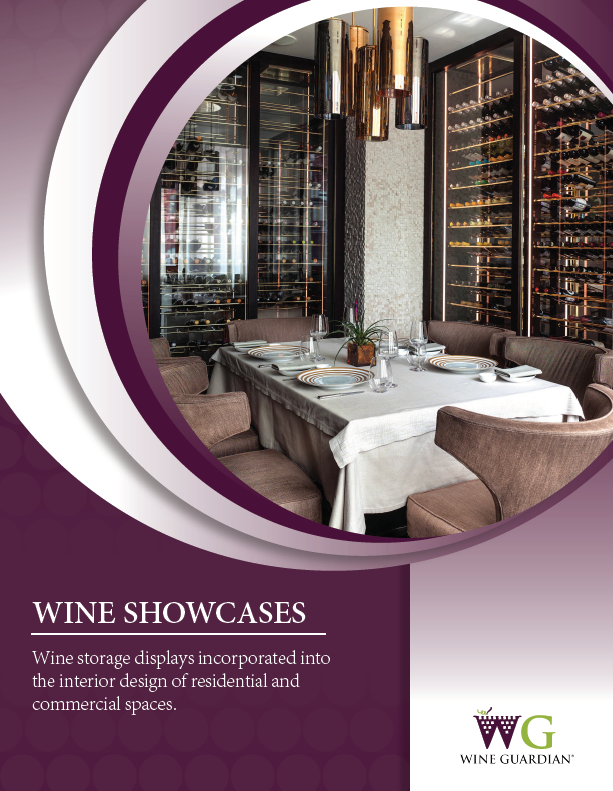When you purchase a Wine Guardian wine cellar cooling unit or humidifier, there are several reasons why you must ensure it is properly installed. Visit our blog or contact us today to learn more.

The Top 4 Risks of Cheap Wine Unit Installation
You’ve made a serious investment in time and money when it comes to your wine collection. You’ve ensured your wine cellar construction is well executed, including a vapor barrier and proper insulation. By choosing a wine cellar cooling unit and humidifier from Wine Guardian, you’ve taken the next step to ensure your wine ages as desired and is ready to serve at a moment’s notice. Yet there’s another investment you may have overlooked – expert installation. If you’re wondering whether these costs are absolutely necessary, consider these common hazards of skimping on wine cellar cooling equipment installation and service.
1.) Purchase of Cooling System with Incorrect Cooling Capacity
You’re expert in a lot of things. But you probably aren’t an expert in all those things and an expert HVAC installer. This is where Wine Guardian can help. Wine Guardian offers several different types of wine cellar cooling units and humidifiers that are designed for various applications and for differing heat loads. Finding the right expert to select your cooling equipment is vital for the preservation of your wine collection.
It’s important to accurately assess the required unit capacity for your specific application, and that goes well beyond the square footage of your cellar space. You must take into account everything from the type of insulation in the walls and how frequently the wine room doors are opened, to the number of bottles to be cooled, and more (we recommend using the Advanced Mode of our Cooling Calculator). When multiple individuals enter and leave your cellar, they bring uncontrolled temperature and humidity from other areas of your home, restaurant, bar, or shop. Large glass windows and walls create a stunning appearance, but they also impact temperature levels in your wine cellar. These factors and more must be taken into account before purchase and installation in order to ensure proper performance.
If you do not properly account for these factors when selecting your cooling unit, you may experience temperature inconsistencies, excessive cooling rates, or inappropriately high or low humidity levels. Your installer should be prepared to do all necessary heat-load calculations to ensure the cooling system you purchase can properly regulate your wine cellar.
2.) Reduced Cooling Unit Performance Due to Improper Installation
Even after you select a wine cooling unit that should cool your space properly, the installer must have the expertise to install each particular type of wine-cellar cooling unit. An untrained technician or DIY enthusiast may not have the expertise to properly install each wine room system – or know what to do should issues arise. Their expertise should include unit placement and setup, system charge requirements, ductwork length and location, grille locations, wiring, and even where to install the thermostat and remote sensors.
For instance, Wine Guardian ducted cooling units utilize external ducting to better distribute the air and control the temperature in your wine cellar. However, these installations require contractors with the necessary skills and knowledge to not only install the unit properly but also ensure the ductwork is routed correctly.
And while through-the-wall cooling systems are easier to install, they must still be mounted flush with the wall or racking and have all openings closed with either a gasket or sealant. Water-cooled systems and split cooling units present even greater challenges.
Your installer must be well-versed in the nuances of environmental control for wine and your cooling equipment to ensure optimal functionality.
3.) Diminished Wine Quality
All of the problems above lead to perhaps the most serious consequence of poor installation: bad wine. The wrong temperature or humidity level can ruin a bottle of wine in several ways. Some unfavorable results from poor temperature or humidity control can include:
- Stronger tannins that create a sharp, pungent bite
- Rougher mouth feel
- Unpleasant acidity, especially in fruity wines
- Cork shrinkage
- Wilted labels
- Higher risk of spoilage for older wines
This alone is sure to prove disappointing for the individual wine collector. However, when considered in terms of a large wine collection for commercial sale or a collection of investment wine, the potential financial loss could be devastating.
4.) Reputation Damage
When wine is a key component of your establishment’s reputation, it’s even more important that your cellar cooling unit is properly installed and calibrated for best results. One or two glasses of subpar wine may not seem important, but over time, your reputation can take a serious hit due to diminished quality. Word of mouth remains a powerful force for restaurants, bars and the like. Unsatisfactory wine quality can quickly produce negative online reviews from critics and guests can eventually lead to lost revenues on top of lost inventory. While at first they may seem unrelated, the reputation of your business and the proper installation of your cellar’s cooling unit go hand in hand.
Protect Your Investment
Your wine cellar cooling equipment is a serious investment in the quality of your wine and your overall satisfaction with your cellar. Make sure you see the greatest return on that investment with the best installation techniques tailored for your cellar’s size, design and other important characteristics. To learn more about our wine cellar cooling systems, contact Wine Guardian today, or reach out to one of our trusted distributors to learn more about creating your cellar.


